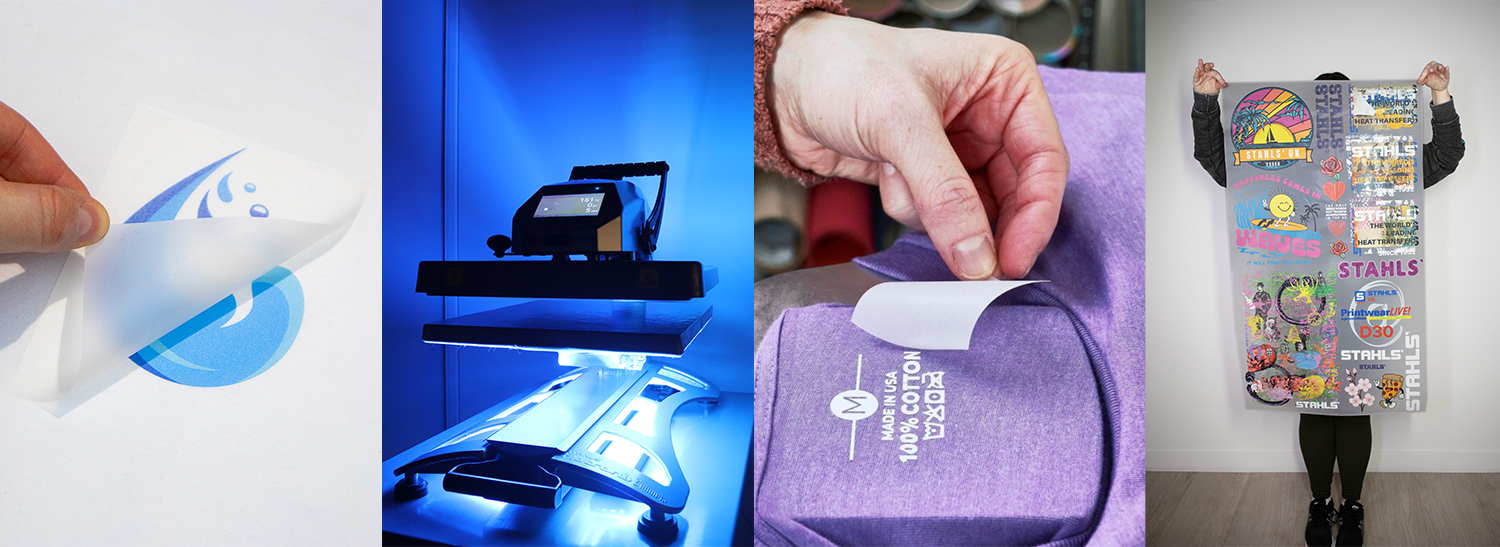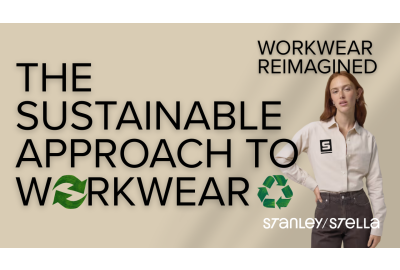Workwear Reimagined: The Sustainable Approach To Workwear
Workwear Reimagined: The Sustainable Approach To Workwear
Workwear Reimagined, cohosted by Stahls' UK and Stanley/Stella is taking place on Tuesday 20th of May 2025 at The Heat Printing Innovation Centre in Braintree Essex. This event, tailored for the UK heat printing industry, focuses on the importance of offering your customers the right approach to workwear. The event will cover, blank garments, style and tailoring expectations, colour pallettes and decoration techniques but will also aims to educate UK heat printers on the sustainable approach to printing workwear in 2025.


There are several things to consider when approaching the production of workwear with the planet in mind. The first of which is the blank garments you're printing on.
Blank Garments
Using recycled, organic, or eco-friendly materials in the production of workwear garments offers numerous benefits. Environmentally, these materials help reduce the carbon footprint of production by requiring fewer resources and less energy. For example, recycled polyester uses less energy than virgin polyester, while organic cotton is grown without harmful pesticides or synthetic fertilizers, reducing greenhouse gas emissions.
Another key advantage is waste reduction. By recycling materials like plastic bottles or old garments, companies can keep these items out of landfills and give them a second life as new fabrics (rPET as an example, is repurposed plastic waste). Additionally, eco-friendly materials often involve less water and fewer chemicals in their production processes, which benefits local ecosystems and reduces water pollution.
From a business perspective, using sustainable materials can help improve a company's reputation, as consumers are increasingly aware of and interested in eco-conscious products. Employees also benefit from the durability and comfort of organic or recycled fabrics, leading to higher satisfaction with their workwear. Moreover, as sustainability becomes more of a priority, brands that adopt these materials are better positioned to meet future regulations and industry standards on environmental practices.
Blank Garment Manufacturers
Premium garment manufacturer Stanley/Stella, places sustainability at the core of its operations. They are committed to reducing their environmental footprint by focusing on responsible material sourcing and minimizing carbon emissions, among many other planet-focused approaches. Their dedication is further demonstrated through their adherence to rigorous certifications such as GOTS (Global Organic Textile Standard), OEKO-TEX Standard 100, and membership in the Fair Wear Foundation, ensuring ethical and eco-friendly practices throughout their supply chain. In 2022, they initiated the Stanley/Stella Charter, outlining ten core principles aimed at enhancing environmental and social governance within the fashion industry. These initiatives underscore Stanley/Stella's unwavering commitment to sustainability and their proactive role in fostering positive change within the fashion sector.
By offering Stanley/Stella base products to your customers, you're aligning your business with a high standard of sustainability, which can appeal to increasingly eco-conscious consumers. This can help set your brand apart, attracting a customer base that prioritizes sustainability and ethical practices. Moreover, as many consumers are willing to pay a premium for environmentally friendly products, it could potentially boost your sales and brand loyalty. Stanley/Stella’s transparent supply chain and ethical labour practices, including their Fair Wear Foundation membership, ensure that you know exactly what goes into the production of the garments you're building your business off. By using a sustainably made base garment, you're not only helping the planet but also supporting fair working conditions.


The second most important approach to consider when printing planet-friendly workwear, is the decoration method.
Decoration Methods
Sustainable garment decoration methods focus on reducing waste, using eco-friendly materials, and increasing the durability of prints and designs. Choosing techniques that use fewer chemicals, minimize water and energy consumption, and produce high-quality, long-lasting products help businesses reduce their environmental footprint, improve their brand's sustainability credentials, and meet the growing consumer demand for eco-conscious products.
Water-based inks are an eco-friendly alternative to traditional plastisol inks, which contain harsh chemicals and require solvents for cleaning. Water-based inks are made with fewer chemicals, and their production process emits fewer volatile organic compounds (VOCs), making them safer for both the environment and the workers involved in the printing process. Additionally, water-based inks are biodegradable, leaving behind a smaller environmental footprint compared to conventional inks.
On-demand printing is a highly efficient and eco-friendly method, particularly beneficial for small businesses or companies with fluctuating demand. By printing garments only when needed, businesses can eliminate the waste associated with overproduction. This approach helps prevent excess stock from sitting unsold and ultimately ending up in landfills or being marked down as waste. In industries where branding or design requirements change frequently, on-demand printing allows businesses to keep their stock fresh and relevant without overcommitting to large runs of unsold inventory. Printing On Demand require less ink, reduces waste, and minimizes energy consumption compared to traditional processes such as screen printing, which often involve extensive setup and the use of large amounts of chemicals and water. Not only does POD reduce environmental impact, but it also helps maintain a lean inventory model, lowering storage costs and reducing the risk of excess unsold stock.
Energy-Efficient Equipment
Utilizing energy-efficient printing equipment is a key component of sustainable garment production. Low-temperature heat applied materials, for example, requires less energy to apply than traditional methods, which typically use higher heat settings that consume more power. Similarly, Hotronix heat presses are energy-efficient and are designed to use less electricity while delivering high-quality results.
Durable Prints for Longer Lifespan
Using high-quality, durable print methods not only ensures that the designs on garments last longer, but also contributes to reducing waste. Garments that are printed with long-lasting techniques—such as Stahls' Heat Transfers that last over 75+ washes—are less likely to fade, crack, or peel over time. This means that employees will be able to wear the workwear for a longer period before needing replacements, which reduces the frequency of garment disposal. Fewer replacements result in less textile waste being sent to landfills, contributing to a more sustainable, circular approach to clothing. Additionally, durable prints reduce the need for businesses to constantly replenish their stock, saving resources and cutting down on production costs in the long run.


Workwear Reimagined, cohosted by Stahls' UK and Stanley/Stella is taking place on Tuesday 20th of May 2025 at The Heat Printing Innovation Centre in Braintree Essex.
Act fast to secure your free ticket

